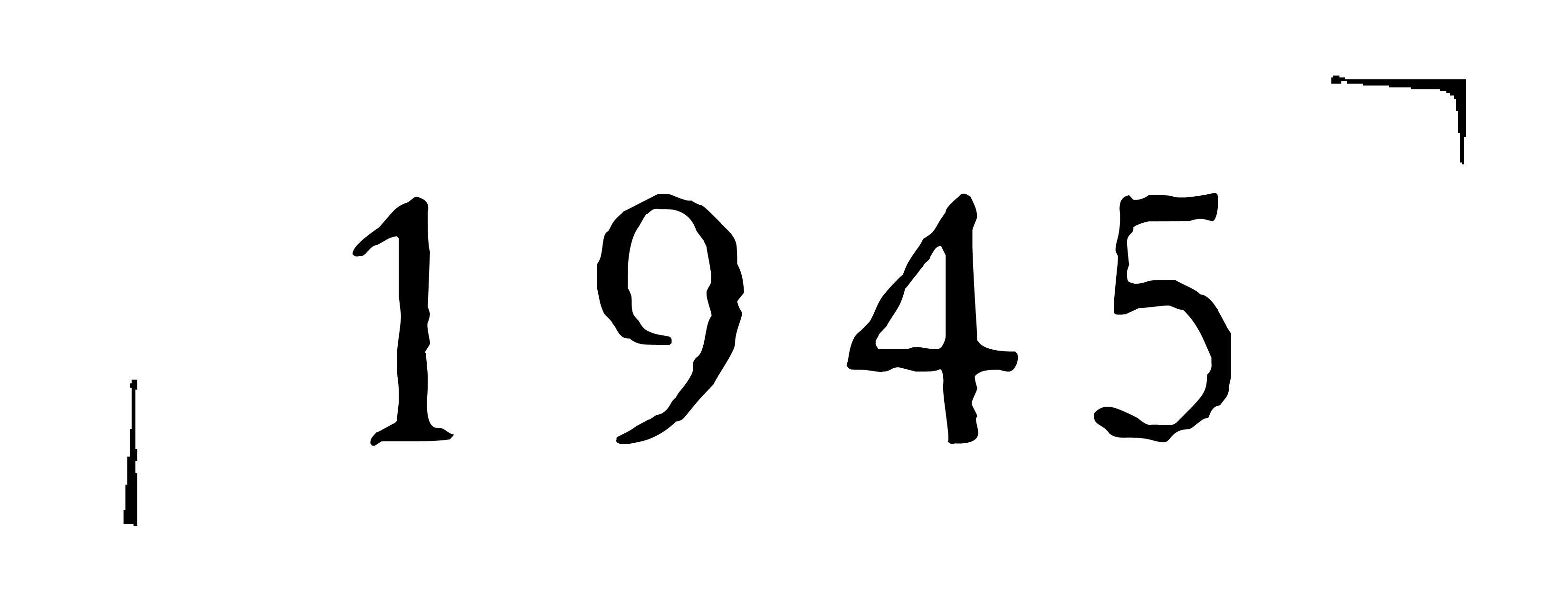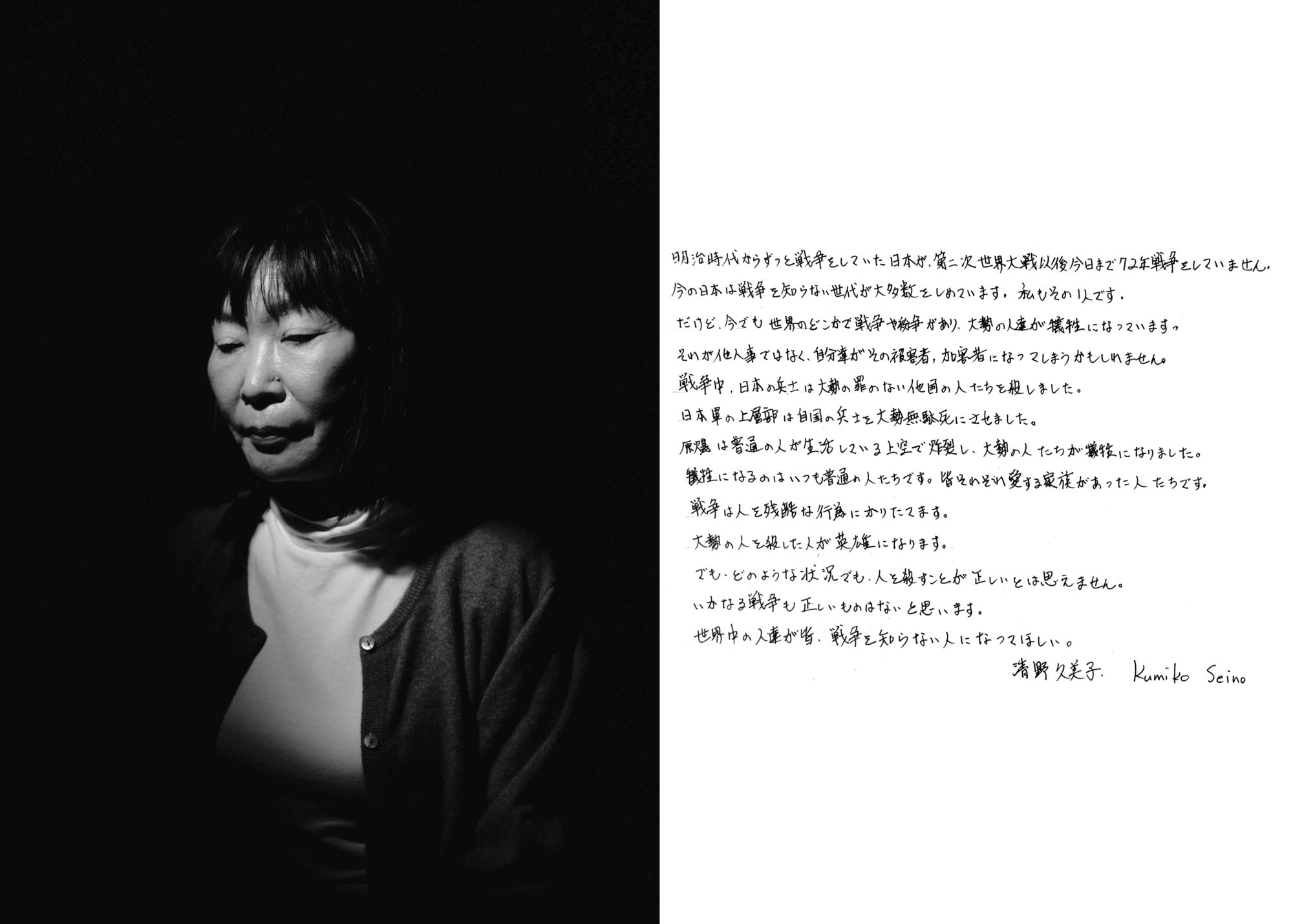Ms. Kumiko Seino
Age: 59
Location: Hiroshima
Distance from hypocenter: Second Generation
“Japan—a country that had been in a constant state of turmoil since the Meiji era—has not engaged in war for the past 72 years, since the end of World War II. At present, the majority of Japanese have never experienced war. I am one of them. Still, war and conflict persist to this day in various corners of the world, victimizing many people. This is not a foreign topic for any of us—at any point, we may easily become victims or perpetuators. During the war, Japanese soldiers brutally murdered many innocent people from other countries. The leaders of the Imperial Japanese Army led many of their own officers to die in vain. The atomic bomb detonated above a region that housed regular people living day by day, and implicated a large number of them. The victims are always regular people—people with families whom they loved dearly. War drives humans to commit horrific acts. It martyrizes individuals who kill the most people. I do not believe that killing—under any circumstances—is the correct course of action. Nor do I believe that there is any way to justify war. My hope is that one day, every individual in this world is able to say that they have never experienced war.
Seino Kumiko”
(Transcribed from a speech that Ms. Seino prepared in English for a presentation at Hiroshima Peace Memorial Park. Here, she describes her mother’s account of the atomic bomb.)
“On August 6th, 1945, my mother left home early in the morning, as usual. She worried about her two-year-old brother because he was crying. Her mother said, “It’s nothing. Your younger brother just spilled some soup and burned himself a little bit. You had better be on your way.” So, although not wanting to leave the house, she headed for work. This was the last conversation that [my mother] had with her family.
After the morning meeting at work, my mother and her friend were walking towards a nearby elementary school. They were carrying big containers filled with boxed lunches. Just after 8 o’clock, she heard the noise of an American plane, the B-29. She looked up saying, “The enemy plane,” then the entire area turned orange with a loud noise. She thought a bomb must have fallen nearby. She forgot what she was carrying and jumped into a rice paddy. Nothing happened, so they went back into the office. Wondering where the bomb hit, they started talking about it. Then they heard something that sounded like lightening and large black raindrops began to fall.
After a while, injured people started coming from downtown. Each one of them was badly burnt or injured. My mother and her friend gave first-aid at an elementary school. They applied medicine to the wounded. They treated burns with grated cucumber because of the lack of medicine. The burned people all said, “Water, water, water.” […] A person nearby with a burnt face said, “I want to drink water,” but my mother didn’t give him water. At the time, people thought that giving water would make them die. When she told him that it was bad to drink water, he said, “I want water to wash my face.” Then my mother filled a helmet with water and gave it to him. At once he drank down all of the water and died the next morning. To this day, my mother regrets that episode, thinking that she killed him with the water.
During the rescue, she didn’t see anyone from her neighborhood in the rescue center. She thought her family was safe. Then she heard someone say, “All of Hiroshima is flattened. I could see the port clearly from the center of the city.” She couldn’t believe it.
Nobody could enter Hiroshima that day, so she spent the night in a classroom in the elementary school. Worried about her family and not able to sleep, she looked out the window in the direction of Hiroshima. It was burning red. She said it was very strange.
The next morning my mother and her friend each got a rice ball and headed into the city. Along the road, injured people wearing ragged clothes were walking slowly. When they got into the city, my mother looked into a burnt streetcar and saw the driver, dead. The passengers were also dead. Everything was spread around everywhere. She couldn’t see the roads anymore, so she followed the streetcar tracks. Half-naked dead bodies were on the streets. There was a large water tank. Someone in the tank suddenly stood up and said, “Hey girl, water please.” She screamed and ran. She had been walking by dead bodies, and was surprised to see someone alive. Even today she can’t forget.
Electric poles had fallen over. Roof tiles had burnt off. Water tanks were lying around, but she finally made it to the T-shaped Aioi Bridge. The whole area was burnt out and very quiet. […]
On the bridge, a dead mounted soldier looked like he was still riding his horse. His horse was lying, dead near him. An American POW (Prisoner of War) was tied up with wires. He was still alive. Some people had seen others throwing bricks and tiles at him. After Japan was occupied by the United States, people were afraid of being punished by the US, and kept this a secret for about ten years after the end of the war but my mother didn’t tell me for 65 years. There were 12 American POW’s in Hiroshima at that time. These American POW’s are now memorialized in the cenotaph along with the other victims of the Atomic Bomb.
My mother parted with her friend at Aioi Bridge and went alone, into the city center. The only buildings left were the present Rest House, a bank, and the public toilet near the movie theater. People who had entered the area wrote messages in charcoal on the wall of the public toilet, for their families. My mother also picked up a piece of charcoal from the burnt ruins and wrote, “Kyoko is safe and in Nagatsuka.” She prayed that her mother would see this and come to find her.
The city center was badly damaged and still burning. She walked over the burnt ruins. She didn’t have leather shoes, so she was wearing flat shoes. She said her feet became very hot. When she got close to the house, she recognized a water tank so she knew where she was. The faces of the corpses lying on the ground were burnt and couldn’t be recognized. She wondered if one of them was her mother. Their clothes were burnt and she didn’t have the courage to pick the heads up to make sure. She continued crying while walking through the sea of dead bodies and the burnt remains. When she passed the side of the A-bomb Dome, she saw the corpses of a mother and two children. The mother’s hair was burnt and frizzled. She was lying face down. Two small boys were lying by her, one on either side. Blood was dripping from the older boy’s nose. They looked like her family, but she couldn’t be sure. Their faces were burnt. There was a rumor that when you see the corpse of your family, they shed blood. She thought that those people must have been her family. She felt bad that she didn’t try to turn their bodies over or check their faces and clothes carefully. She still regrets this now.
Starting the next day, she went to her relatives’ houses and walked around to a number of shelters in Hiroshima City asking about her family. She couldn’t find them. She wondered if there were some bones in the remains of her burnt house. She dug around to look for them. All she could find was a lens from her mother’s glasses. It had melted like candy. She took it with her as a keepsake.
My mother’s family was never found. To this day, there hasn’t been a funeral. The family grave is empty because her mother, father, and her two brothers’ ashes are not there. Because of that, my mother considers the cenotaph and the atomic bomb memorial mound in the Peace Memorial Park to be her family grave. The Peace Memorial Park was built by covering the area with dirt. When I think that the bones might still be resting somewhere, I also feel that this is our family grave. For two weeks, my mother searched for her family. Her house burned down, with her family photos. There is no picture anywhere of her younger brother, who died at two years old.”


